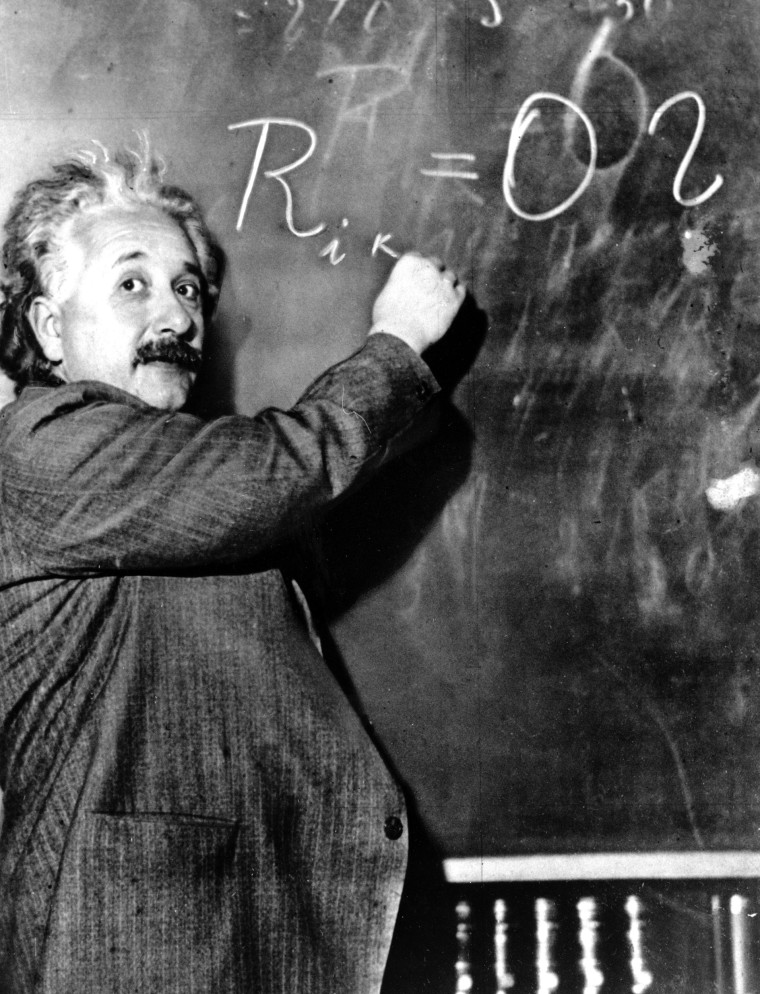What could be more familiar than gravity? Drop something and gravity pulls it to the floor, right? And in school we learn that gravity is what guides the moon in orbit around Earth, and Earth in its own orbit around the sun.
Gravity keeps our feet planted on the floor. It guides the path of every basketball free throw, as well as the trajectory of every spacecraft we’ve ever launched or ever will. It literally holds the universe together.
Gravity is one of the four known forces in physics. The others are electromagnetism — which governs electricity, magnetism and light — and a pair of nuclear forces that operate across the tiny distances within atomic nuclei. And as counterintuitive as it might seem, gravity is by far the weakest of the lot. A small refrigerator magnet is enough to lift a paperclip off a table — even though the entire mass of the Earth is pulling it down.
Our knowledge about gravity has been evolving since the days of Isaac Newton and his apple — and it still is. Every time we discover something new about gravity, we see the world around us in a new light.
Newton’s brilliant insight
In 1666, the 23-year-old Newton had returned from Cambridge University to his home in the English countryside. As he told a biographer years later, he was in a contemplative mood one lazy afternoon when, “occasioned by the fall of an apple,” his thoughts turned to gravity. Newton was hardly the first person to notice that apples fall from trees. His great insight came when he showed mathematically that the force that pulls apples toward Earth must be the same one that holds the moon in its orbit.
At the heart of Newton’s conception of gravity — now known as the law of universal gravitation — is that everything in the universe is constantly tugging on everything else. And the strength of that force is proportional to its mass — in other words, the bigger an object, the stronger its gravity.

The force of gravity also falls off with distance that separates objects. As physicists put it, the force is inversely proportional to the square of the distance between them. That just means that if you double the distance between two objects, the force of gravity they exert on each other is only one-fourth as strong.
This is how Newton described the force of gravity: everything pulling on everything else, no matter where they are or what distance separates them. But something about this conception of gravity bothered him. How exactly did a force operate across empty space?
“The idea that there would be this ‘attraction at a distance’ made no sense to him,” says Richard Panek, the New York-based author of Gravity: Solving the Mystery Beneath Our Feet (2019). “To the end of his life, Newton was saying ‘Maybe one day, we’ll find out what this thing is, that’s having this effect.’”
Einstein’s revolution
The mystery of how gravity worked across empty space was solved more than 200 years later by Albert Einstein, whose general theory of relativity described gravity in a new way. While Newton thought of gravity as a force, Einstein saw it as a warping of space itself. As Panek puts it, “Newton portrayed gravity as an action that happens across space, but Einstein saw it was the interaction of matter with space.”

The warping of space is, admittedly, hard to picture. A helpful analogy is the way that a bowling ball placed on a rubber sheet distorts the surface of the sheet. Now picture a marble rolling along the sheet. Because the surface is warped, the marble rolls along a curved path. The marble behaves just as if the bowling ball were exerting a force on it.
Does Einstein’s conception of gravity mean Newton’s was wrong? Not really. It’s just that Einstein’s is more accurate and comprehensive. If you’re calculating when a tossed baseball is going to hit the ground, or calculating when the next eclipse will happen, Newton’s law of gravity is just fine. But in extreme cases — when very massive objects are involved, for example — you’d need Einstein’s more accurate equations. And it’s only through Einstein’s general relativity that we’ve come to understand the workings of exotic objects such as black holes and phenomena like gravitational waves.
For most purposes, scientists continue to think about gravity as a force, as Newton did. Even astronauts tend to think of gravity in Newtonian terms. As the Apollo 8 spacecraft coasted back from the moon in December, 1968, astronaut Bill Anders quipped, “I think Isaac Newton is doing most of the driving right now.”
The future of gravity
As successful as Einstein’s theory has been in helping physicists solve numerous problems in astrophysics and cosmology, it’s likely not the final word on gravity. That’s because no one has figured out how to reconcile general relativity with the other great theory of physics, quantum mechanics, which describes the inner workings of the subatomic realm. “The problem is that general relativity doesn’t play well with quantum mechanics,” Panek says. “Gravity is the only one of the four forces that doesn’t have a quantum explanation.”
Physicists hope that a more complete theory may one day combine general relativity with quantum mechanics. If and when that happens, we may once again come to see gravity in a new light.
WANT MORE STORIES ABOUT SCIENCE?
- Why our galaxy probably isn't full of alien civilizations killed off by climate change
- What happened before the Big Bang?
- Stonehenge was built by descendants of Neolithic migrants, DNA study shows
SIGN UP FOR THE MACH NEWSLETTER AND FOLLOW NBC NEWS MACH ON TWITTER, FACEBOOK, AND INSTAGRAM.

